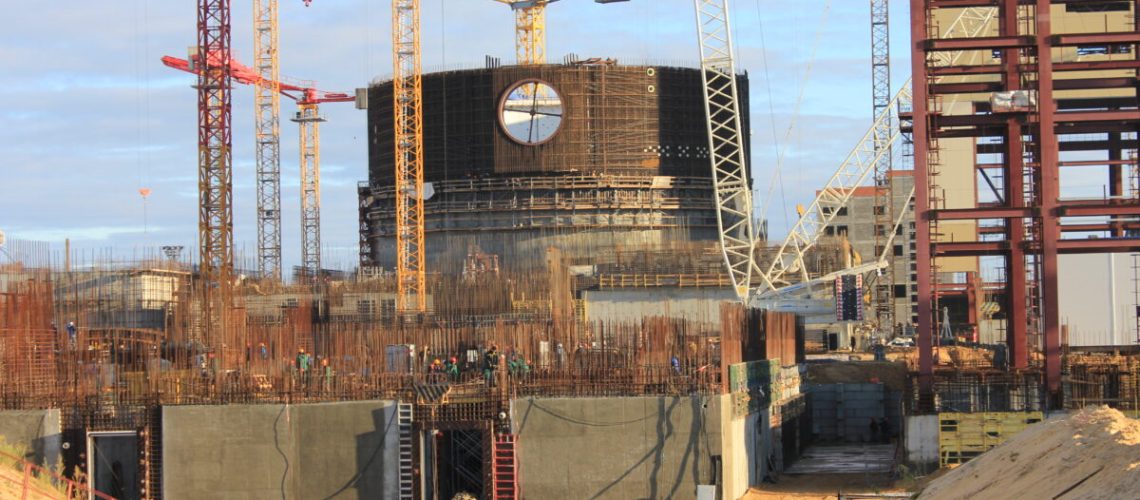Authors of the World Nuclear Industry Status Report 2024 the world had 408 operational reactors producing 367 GW in the middle of the year, which is significantly less than installed capacity predictions for solar by the end of the year and five time less the world’s cumulative PV capacity, which is now approaching 2 TW.
From pv magazine Global
The World Nuclear Industry Status Report (WNISR) 2024, overseen by French nuclear energy consultant Mycle Schneider, shows that the world’s installed PV capacity has now exceeded by almost five times that of nuclear energy.
“The role of an annual report like the WNISR is the identification of pre-existing trends that have continued in the previous year and of potential developments that are in rupture with previous trends or simply exceptional events,” the report’s main author, Mycle Schneider, told pv magazine. “In addition, the WNISR tries to identify developments that receive little attention otherwise.”
He also said that the WNISR confirms the trends of recent years when it comes to key indicators: nuclear production increased slightly in 2023 but remains below the levels of 2021 and 2019; as of mid-2024, the number of operating units stands at 408, one more than a year ago, but 30 below the peak in 2002 while the installed capacity has increased to a new record (marginally +0.3 GW) beyond the 2006 record.
“Similarly, as of mid-2024, there is one more reactor under construction in the world but three less countries building – US, UAE, Brazil,” he added. “That means that the largest nuclear operating country, the US does not have a single reactor under construction, and no utility in the country has filed for a construction license for a large reactor. The only application for a construction license was sent to the US regulator for Bill Gates’ small fantasy reactor Natrium whose design is not even licensed yet.”
The report reveals that at the end of June, 408 operational reactors were producing 367 GW across the globe, which compares to around 1.6 TW of PV at the end of 2023 and possibly around 1.9 TW by the end of June, given recent projections from BloombergNEF and Bernreuter Researchers, which foresee 592 GW and 660 GW, respectively, this year.
The report also states that only five new nuclear reactors totaling 5 GW were switched on in Belarus, China, Slovakia, South Korea, and the U.S. last year, and adds that this little growth was not sufficient to increase the world’s operating nuclear capacity, as another five plants with a combined capacity of 6 GW were closed in Germany, Belgium and Taiwan.
“Over the two decades 2004–2023, there were 102 startups and 104 closures,” the report notes. Of these, 49 startups were in China which did not close any reactors. As a result, outside China, there has been a drastic net decline by 51 units over the same period, and net capacity declined by 26.4 GW.”
The authors of the report also report that 59 nuclear plants equaling 60 GW were under construction across 13 countries at the end of June, which compares to 64 projects in 2023. China accounts for around 46% of the total with 27 projects under construction.
“All reactors under construction in at least nine of the 13 builder-countries have experienced, often year-long, delays,” the authors of the report said. “Of the 23 reactors documented as behind schedule, at least 10 have reported increased delays and two were reported as delayed for the first time over the past year.”
According to Schneider, the Key is to analyze the dominating role of China and Russia. Since December 2019 and until mid-2024, there were 35 construction starts in the world, 22 in China and 13 implemented by Russia in various countries. “Nothing else, nowhere, by nobody,” he stated. “But even in the only country that is massively building, China, nuclear development is comparatively marginal. In 2023, China started up one new nuclear reactor, that is plus 1 GW, and more than 200 GW of solar alone. Solar generated 40% more power than nuclear and all non-hydro renewables—mainly wind, solar, and biomass—generated four times as much as nuclear.”
The report also highlights how nuclear power is being challenged not only by the strong growth of solar and wind, but also by battery storage, whose costs are projected to decline below those of coal-fired and nuclear power plants by around 2025 in China. “Solar plus storage is already significantly lower than nuclear power in most markets today, as well as highly competitive with other low-emissions sources of electricity that are commercially available today,” it also notes.
The authors also cite data from investment bank Lazard revealing that solar-plus-storage can already be cheaper than gas peaking and new nuclear. “The competitive cost and large-scale availability of variable renewable energy sources combined with firming options—especially storage—could well turn out to be the game-changer of energy policy in the years to come,” they further explain.
The report also analyzes the current trajectory of the so-called small modular reactors (SMRs), which promise to be the next-generation plants, despite extremely limited development to date. “The gap between hype about SMRs and industrial reality continues to grow,” the authors say. “The nuclear industry and multiple governments are doubling down on their financial and political investments into SMRs. So far, reality on the ground does not reflect those efforts: with no design certifications, no constructions in the west, SMR projects continue to be delayed or canceled.”
They conclude that, despite a common perception that nuclear energy is regaining momentum, it is becoming “irrelevant” in the global market. “Solar-plus-storage might be the game changer for the adaptation of policy decisions to current industrial realities,” they stated.



